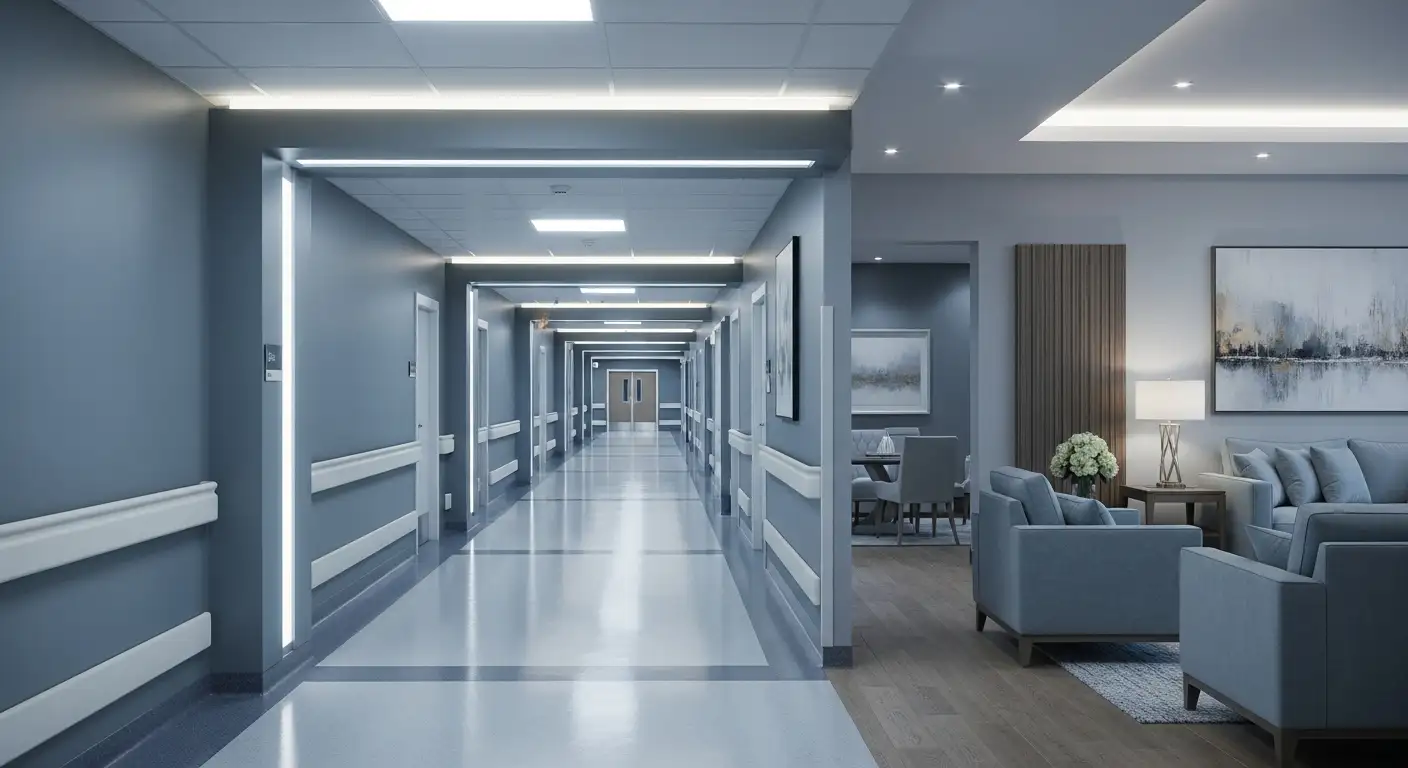Understanding Knee Pain in Elderly
Knee pain is a prevalent issue among the elderly population, causing discomfort and hindering mobility. Understanding the prevalence and causes of knee pain in the elderly is crucial in finding effective solutions for relief.

Prevalence of Knee Pain
During a one-year period, approximately 25% of individuals over the age of 55 experience a persistent episode of knee pain. In the UK and the Netherlands, about one in six individuals consult their general practitioner about knee pain within the same timeframe. Additionally, the prevalence of painful disabling knee osteoarthritis in individuals over 55 years old is approximately 10%, with a quarter of them experiencing severe disability.
These statistics highlight the significant impact knee pain has on the elderly population and the importance of finding effective solutions to alleviate their discomfort.
Causes of Knee Pain in Elderly
Knee pain in the elderly can be attributed to various causes. General wear and tear from daily activities such as walking, bending, standing, and lifting can contribute to knee pain. Athletes who engage in activities that involve running, jumping, or quick pivoting are also more prone to experiencing knee pain and problems.
Common knee problems in the elderly include:
- Ligament and Muscle Strains: These occur when the ligaments or muscles around the knee joint are stretched or torn, often due to sudden movements or overexertion.
- Cartilage Tears: Tears in the cartilage, such as meniscal tears, can lead to knee pain and limited mobility. These tears can result from degenerative changes or sudden injuries.
- Tendonitis: Inflammation of the tendons that surround the knee joint can cause pain and swelling. Tendonitis is often a result of repetitive activities or overuse.
- Arthritis: Osteoarthritis, the most common type of arthritis that affects the knee, is often caused by excess stress on the joint, such as repeated injuries or being overweight [2].
Understanding the underlying causes of knee pain in the elderly can guide the selection of appropriate treatment options and relief products to alleviate their discomfort and improve their quality of life.
Managing Knee Pain
When it comes to managing knee pain, there are various approaches that can help alleviate discomfort and improve mobility. This section will explore three key strategies: range of motion exercises, strengthening joints, and weight management.
Range of Motion Exercises
Increasing functionality through a greater range of motion has shown to provide significant relief for knee pain. By putting weight on the joint and working it through its full range of motion, including the knees, individuals have reported a decrease in pain or even complete pain relief throughout the range. Range of motion exercises can help improve flexibility, reduce stiffness, and enhance joint mobility [3].
These exercises can be performed under the guidance of a physical therapist or as part of a prescribed exercise program. Examples of range of motion exercises for the knees include knee extensions, hamstring stretches, and gentle knee rotations. It's important to perform these exercises with proper form and avoid overexertion to prevent further injury.
Strengthening Joints
Strengthening the joints plays a crucial role in managing knee pain, particularly for individuals with knee osteoarthritis (OA). Physical therapy (PT) and targeted exercises have been shown to improve muscle function and aerobic capacity, leading to a reduction in knee OA symptoms. Studies have demonstrated that supervised PT programs can effectively reduce pain and improve overall function in individuals with knee OA.
PT sessions often include exercises that target specific muscles around the knee, such as quadriceps and hamstring strengthening exercises. These exercises help stabilize the knee joint and provide support, reducing stress on the affected area. It is recommended to consult with a healthcare professional or physical therapist to develop an individualized exercise program that suits your specific needs and abilities.
Weight Management
Maintaining a healthy weight is essential for managing knee pain, particularly in the elderly population. Excess weight can put additional stress on the knees, exacerbating pain and accelerating joint degeneration. According to a study, the prevalence of painful and disabling knee osteoarthritis in individuals over 55 years old is 10%, with a quarter of them being severely disabled.
By managing weight through a balanced diet and regular exercise, individuals can reduce the load on their knees and alleviate pain. Incorporating low-impact exercises, such as swimming or cycling, can help improve cardiovascular health without putting excessive strain on the joints. It's crucial to consult with a healthcare professional or a registered dietitian to develop a personalized weight management plan that suits individual needs and health conditions.
By incorporating range of motion exercises, strengthening joint exercises, and weight management strategies into a comprehensive knee pain management plan, individuals can experience improved mobility, reduced pain, and enhanced overall quality of life. It's important to consult with healthcare professionals for personalized advice and guidance based on individual circumstances.
Common Knee Problems
Knee problems are prevalent among the elderly population and can significantly impact their quality of life. Understanding the common knee problems that the elderly may experience is essential for effective management and finding suitable relief. Some of the most common knee problems include ligament and muscle strains, cartilage tears, tendonitis, and arthritis.
Ligament and Muscle Strains
Ligament and muscle strains are common causes of knee pain in the elderly. These injuries can occur due to sudden movements, overexertion, or trauma. Strains can cause pain, swelling, and limited mobility in the affected knee.
Cartilage Tears
Cartilage tears, also known as meniscal tears, are another frequent knee problem seen in the elderly. These tears can result from degenerative changes, wear and tear, or sudden twisting motions. The meniscus acts as a cushion between the thigh bone and the shin bone, and when damaged, it can cause pain, swelling, and difficulty with knee movements.
Tendonitis and Arthritis
Tendonitis and arthritis are two conditions that commonly affect the knees of elderly individuals. Tendonitis refers to the inflammation of the tendons surrounding the knee joint. This inflammation can be caused by repetitive stress or overuse of the knee joint. Arthritis, particularly osteoarthritis, is the most prevalent type of arthritis that affects the knee in the elderly. Osteoarthritis is often caused by excess stress on the joint, such as repeated injury or being overweight.
Arthritis in the knee can result in pain, stiffness, swelling, and reduced mobility. It is a chronic condition that gradually worsens over time. Osteoarthritis is typically managed through a combination of conservative treatments, including physical therapy, exercise, and medication.
To effectively manage these common knee problems, a comprehensive approach is often necessary. Treatment may include physical therapy and exercise to improve muscle function and joint mobility. Additionally, medication such as topical NSAIDs (non-steroidal anti-inflammatory drugs) or acetaminophen may be used for pain relief. In some cases, knee bracing and taping may be recommended to provide support and stability to the knee joint, although further research is needed to evaluate their effectiveness in older adults.
Understanding the specific knee problem is crucial in determining the most appropriate treatment options for the elderly. Consulting with a healthcare professional is recommended to receive an accurate diagnosis and personalized treatment plan based on individual needs and circumstances.
Diagnostic Tests for Knee Pain
When it comes to diagnosing knee pain in the elderly, several diagnostic tests are available to healthcare professionals. These tests help identify the underlying causes of knee pain and guide appropriate treatment strategies. Some common diagnostic tests for knee pain include X-rays, MRIs, CT scans, arthroscopy, and bone scans.
X-rays and MRIs
X-rays are often the first imaging test used to evaluate knee pain. X-rays provide detailed images of the bones, allowing healthcare professionals to assess for fractures, bone spurs, and signs of arthritis. X-rays are quick, non-invasive, and readily available.
Magnetic resonance imaging (MRI) is a more advanced imaging technique that provides detailed images of the soft tissues surrounding the knee joint, such as the ligaments, tendons, and cartilage. MRIs are particularly useful for diagnosing ligament tears, meniscal injuries, and other soft tissue abnormalities. However, MRIs are more expensive and time-consuming compared to X-rays.
CT Scans and Arthroscopy
Computed tomography (CT) scans may be recommended in certain cases to provide a more detailed view of the bones and surrounding structures. CT scans use a combination of X-rays and computer technology to create cross-sectional images of the knee. This imaging technique is especially helpful in assessing complex fractures, bone tumors, or evaluating bony abnormalities.
Arthroscopy is a minimally invasive procedure that involves inserting a small camera into the knee joint through a small incision. This allows healthcare professionals to directly visualize the inside of the joint and identify any abnormalities. Arthroscopy can be both diagnostic and therapeutic, as certain knee conditions can be treated during the procedure.
Bone Scans
Bone scans are nuclear medicine tests used to assess for bone abnormalities, such as stress fractures, infections, or tumors. During a bone scan, a small amount of radioactive material is injected into the bloodstream, which accumulates in areas of high bone activity. Special cameras then detect this radiation and create images that highlight areas of bone abnormalities.
These diagnostic tests play a crucial role in accurately diagnosing knee pain in the elderly. The choice of test depends on the suspected underlying cause of the pain and the specific symptoms experienced by the individual. By utilizing these tests, healthcare professionals can formulate an appropriate treatment plan and provide targeted relief for knee pain in the elderly.
Treatment Options
When it comes to managing knee pain in the elderly, there are various treatment options available to alleviate discomfort and improve mobility. In this section, we will explore three common treatment options: physical therapy and exercise, orthotics and footwear, and knee bracing and taping.
Physical Therapy and Exercise
Physical therapy (PT) and exercise play a crucial role in improving muscle function and aerobic capacity, which can help alleviate knee pain symptoms, especially in cases of knee osteoarthritis (OA). Studies have shown that targeted PT to improve muscle function and aerobic exercise can lessen knee OA symptoms, with supervised programs demonstrating a reduction in pain and improvement in function.
The goal of physical therapy is to strengthen the muscles around the knee joint, improve flexibility, and enhance overall joint stability. Physical therapists may use a combination of exercises, such as range of motion exercises, strength training, and low-impact aerobic activities, to achieve these goals. These exercises are tailored to the individual's specific needs and may involve both in-clinic sessions and at-home exercises.
By following a targeted physical therapy program, elderly individuals with knee pain can experience improvements in pain levels, joint function, and overall quality of life.
Orthotics and Footwear
Orthotics and appropriate footwear can provide support and help alleviate knee pain, especially in cases of knee osteoarthritis with varus deformity. Lateral-wedged insoles and orthotics have been studied in the management of knee osteoarthritis, showing a decrease in pain medication consumption in patients with medial knee OA at 6 months and 2 years. However, their effects on function and pain are still under investigation.
Orthotics are custom-made shoe inserts that are designed to provide additional support, improve alignment, and distribute pressure evenly across the foot and knee joints. These inserts can help reduce excess stress on the knee joint and improve overall comfort and stability while walking or engaging in physical activities.
Choosing appropriate footwear is also essential in managing knee pain. Shoes with good arch support, cushioning, and a stable sole can help reduce impact on the knee joint and provide better shock absorption. It's recommended to consult with a podiatrist or foot specialist to determine the most suitable orthotics and footwear for individual needs.
Knee Bracing and Taping
Knee bracing and taping are additional treatment options that can provide relief for knee pain, particularly in cases of knee osteoarthritis. Various knee braces, such as neoprene knee sleeves and valgus unloading knee braces, have shown effectiveness in decreasing pain and improving function in patients with medial knee osteoarthritis [4]. However, their long-term effects and overall efficacy require further study.
Patellar taping, a technique that involves applying tape to the kneecap, has shown significant reductions in pain for individuals with osteoarthritis affecting the patellofemoral knee compartment. However, the use of patellofemoral bracing did not demonstrate a significant beneficial effect on pain or function [4]. Further research is needed to determine the full extent of their effectiveness.
It's important to consult with a healthcare professional, such as a physical therapist or orthopedic specialist, to determine the most suitable knee bracing or taping method for one's specific knee condition.
By considering these treatment options, elderly individuals experiencing knee pain can find relief and improve their overall quality of life. The choice of treatment should be based on individual needs, medical advice, and a comprehensive evaluation of the underlying causes of knee pain.
Medication and Relief Products
When it comes to finding relief from knee pain in the elderly, there are several medication and relief products available that can help alleviate discomfort and improve mobility. In this section, we will explore three common options: topical NSAIDs, acetaminophen, and pain relief devices.
Topical NSAIDs
Topical NSAIDs (nonsteroidal anti-inflammatory drugs) are a safe and effective option for managing knee pain, particularly in cases of osteoarthritis. Research has shown that topical NSAIDs have a modest effect in reducing pain in knee osteoarthritis. These medications work by reducing inflammation in the affected area, providing localized relief.
Two commonly used topical NSAIDs for knee pain relief are diclofenac and ketoprofen. Studies have shown that topical diclofenac and topical ketoprofen are significantly more effective than a carrier alone in reducing pain, with approximately 60% of participants experiencing a significant reduction in pain [6]. While these topical NSAIDs may not provide relief for everyone, they can be a valuable option for individuals with knee osteoarthritis.
Acetaminophen
Acetaminophen, also known as paracetamol, is another widely used medication for managing knee pain, particularly in cases of osteoarthritis. It is recommended as a first-line analgesic for mild to moderate pain due to osteoarthritis of the knee and hip [7]. Acetaminophen works by reducing pain signals in the brain and can provide effective relief for many individuals.
It's important to note that acetaminophen is primarily a pain reliever and may not have significant anti-inflammatory effects. Therefore, it may be more effective for individuals with knee pain that is not primarily caused by inflammation. As with any medication, it is advisable to follow the recommended dosage and consult a healthcare professional if you have any concerns.
Pain Relief Devices
In addition to medications, there are various pain relief devices available that can provide targeted relief for knee pain. These devices are designed to support and stabilize the knee joint, reducing discomfort and improving mobility. One example is the IMAK Compression Arthritis Knee Sleeve, which is specifically designed to help individuals combat knee pain caused by arthritis.
Pain relief devices can come in the form of knee braces, wraps, sleeves, or compression garments. They work by providing support to the knee joint, reducing stress and strain on the affected area. These devices can be particularly beneficial for individuals with chronic knee pain or those recovering from knee injuries.
When considering pain relief devices, it is important to choose one that suits your specific needs and provides the necessary level of support. Consulting with a healthcare professional or physical therapist can help you determine the most appropriate device for your condition.
By exploring medication and relief products such as topical NSAIDs, acetaminophen, and pain relief devices, individuals with knee pain can find effective options for managing their discomfort and improving their quality of life. It is advisable to consult with a healthcare professional to determine the best course of treatment based on your specific needs and medical history.
References
- [1]: https://www.ncbi.nlm.nih.gov/pmc/articles/PMC1753462/
- [2]: https://www.hopkinsmedicine.org/health/conditions-and-diseases/knee-pain-and-problems
- [3]: https://www.quora.com/What-are-common-over-the-counter-medications-for-relieving-joint-pain
- [4]: https://www.ncbi.nlm.nih.gov/pmc/articles/PMC3261252/
- [5]: https://www.ncbi.nlm.nih.gov/pmc/articles/PMC3383468/
- [6]: https://www.ncbi.nlm.nih.gov/pmc/articles/PMC6494263/
- [7]: https://www.ncbi.nlm.nih.gov/pmc/articles/PMC3529168/
- [8]: https://www.arthritis.org/partnership/ease-of-use-products



